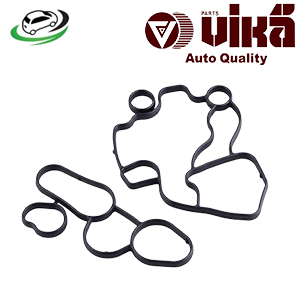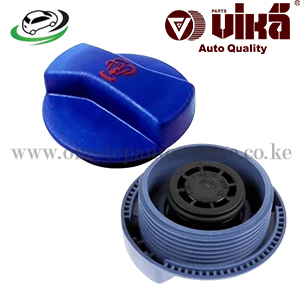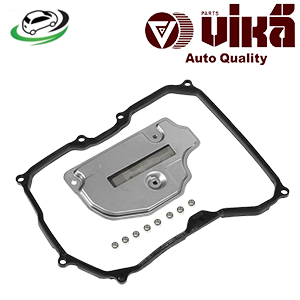-13%
Get Automatic Transmission Oil Filter Gasket Kit VW Touran 2003-2010/Passat CC 2008-2012/Passat B6 2005-2010/Golf Plus 2005-2009/Golf V 2005-2009 09G325429
The automatic transmission oil filter gasket is a crucial component in the transmission system of a vehicle. It ensures a tight seal around the transmission oil filter, preventing leaks and maintaining optimal fluid pressure. Here’s a comprehensive look at the function, types, common issues, maintenance, and replacement of the automatic transmission oil filter gasket.
Function of the Automatic Transmission Oil Filter Gasket
The primary role of the automatic transmission oil filter gasket is to seal the transmission oil filter to the transmission housing, ensuring that transmission fluid does not leak and remains under the necessary pressure to function effectively. The gasket helps in:
- Preventing Leaks: By sealing the connection between the transmission filter and the transmission housing, the gasket prevents fluid leaks, which could lead to reduced transmission performance or damage.
- Maintaining Fluid Pressure: The gasket helps maintain the proper fluid pressure required for the efficient operation of the transmission.
- Ensuring Clean Fluid: It supports the filter’s function of trapping contaminants and debris, ensuring that only clean transmission fluid circulates through the system.
Types of Automatic Transmission Oil Filter Gaskets
Automatic transmission oil filter gaskets come in various materials, each designed to meet specific needs and performance criteria:
- Cork Gaskets:
- Material: Made from cork material.
- Pros: Inexpensive, good for basic sealing needs.
- Cons: Can compress and leak over time, less durable than other types.
- Rubber Gaskets:
- Material: Made from synthetic rubber compounds.
- Pros: Flexible, good sealing properties, resistant to heat and oil.
- Cons: Can degrade over time due to exposure to transmission fluid and heat.
- Composite Gaskets:
- Material: Made from a combination of rubber, cork, and other materials.
- Pros: Durable, good sealing properties, can withstand higher pressures.
- Cons: More expensive, may require precise installation.
- Metal Gaskets:
- Material: Made from metal or metal-reinforced materials.
- Pros: Extremely durable, resistant to heat and pressure, excellent sealing.
- Cons: More expensive, requires precise installation to avoid leaks.
Importance of the Automatic Transmission Oil Filter Gasket
A well-functioning automatic transmission oil filter gasket is essential for several reasons:
- Prevents Fluid Leaks: Leaks can lead to low fluid levels, which can cause overheating, poor performance, and potential transmission failure.
- Maintains Proper Fluid Pressure: Proper sealing ensures that the transmission fluid remains under the necessary pressure for optimal performance.
- Supports Filter Functionality: By ensuring a secure seal, the gasket helps the filter perform its job of trapping contaminants effectively.
- Extends Transmission Life: Preventing leaks and maintaining clean fluid circulation helps prolong the life of the transmission.
Common Issues with Automatic Transmission Oil Filter Gaskets
Over time, the transmission oil filter gasket can develop issues that affect its performance:
- Wear and Tear: Continuous exposure to heat, pressure, and transmission fluid can cause the gasket material to degrade, leading to leaks.
- Improper Installation: Incorrect installation can result in misalignment or improper sealing, causing fluid leaks.
- Contamination: Dirt, debris, or old gasket material left on the mating surfaces can prevent a proper seal.
- Over-Tightening: Over-tightening the bolts securing the gasket can cause it to compress too much or even crack, leading to leaks.
Signs of a Failing Automatic Transmission Oil Filter Gasket
Identifying the signs of a failing gasket early can help prevent more severe transmission issues. Common symptoms include:
- Fluid Leaks: Visible transmission fluid leaks under the vehicle.
- Low Transmission Fluid Levels: Frequently needing to top off transmission fluid can indicate a leak.
- Transmission Slipping: A slipping transmission may be a sign of low fluid levels due to a leaking gasket.
- Overheating: An overheating transmission can result from low fluid levels caused by a leaking gasket.
- Unusual Noises: Whining or grinding noises from the transmission may indicate fluid issues related to a failing gasket.
Maintenance and Prevention
Regular maintenance can help ensure the longevity and effectiveness of the transmission oil filter gasket:
- Regular Inspections: Check the transmission fluid level and look for signs of leaks during routine maintenance.
- Fluid Quality: Use high-quality transmission fluid to reduce the risk of gasket degradation.
- Proper Installation: Ensure the gasket is installed correctly, with clean mating surfaces and the right torque on the bolts.
- Replace When Necessary: Replace the gasket at recommended intervals or if any signs of failure are present.
Replacement of the Automatic Transmission Oil Filter Gasket
Replacing the transmission oil filter gasket is a relatively straightforward process but requires careful attention to detail:
- Preparation:
- Tools and Materials: Gather necessary tools, including wrenches, sockets, transmission fluid, a new filter, and a replacement gasket.
- Safety Measures: Ensure the vehicle is on a level surface and properly supported on jack stands.
- Drain Transmission Fluid:
- Drain Pan: Place a drain pan under the transmission and remove the drain plug to drain the fluid.
- Remove Pan: Remove the bolts securing the transmission pan and carefully lower it.
- Remove Old Filter and Gasket:
- Filter: Remove the old transmission filter.
- Gasket: Scrape off the old gasket material from the transmission housing and pan. Ensure the surfaces are clean and smooth.
- Install New Filter and Gasket:
- New Filter: Install the new transmission filter according to the manufacturer’s instructions.
- New Gasket: Align the new gasket on the transmission pan or housing, ensuring proper placement.
- Reattach Transmission Pan:
- Bolts: Reattach the transmission pan, tightening the bolts to the manufacturer’s specified torque settings to avoid over-tightening.
- Refill Transmission Fluid:
- Fluid: Refill the transmission with the recommended type and amount of fluid.
- Check for Leaks: Start the engine and let it run for a few minutes, checking for any leaks.
- Test Drive:
- Performance Check: Take the vehicle for a short test drive to ensure the transmission is operating smoothly and there are no leaks.
Follow us on Facebook for more parts.



